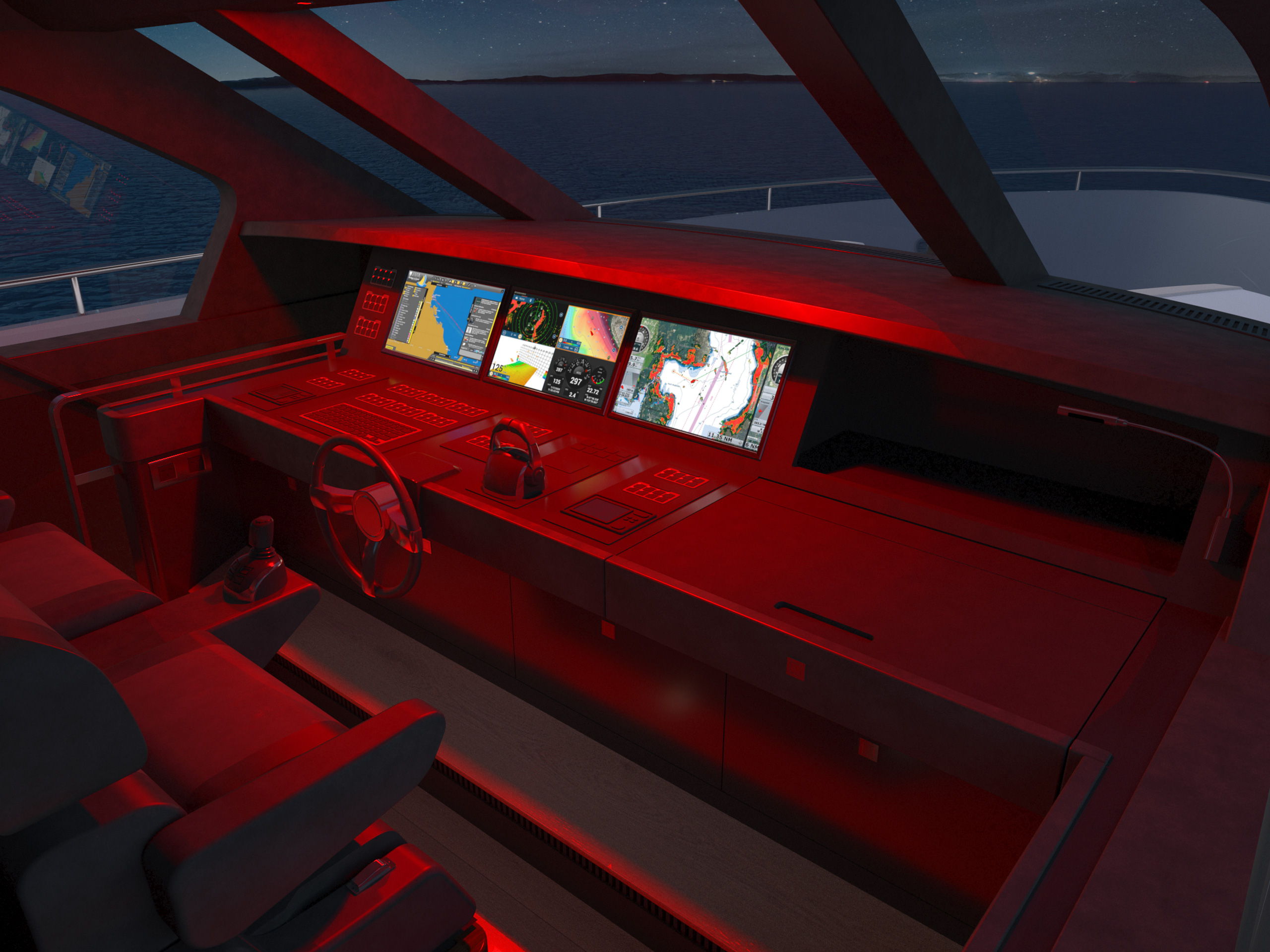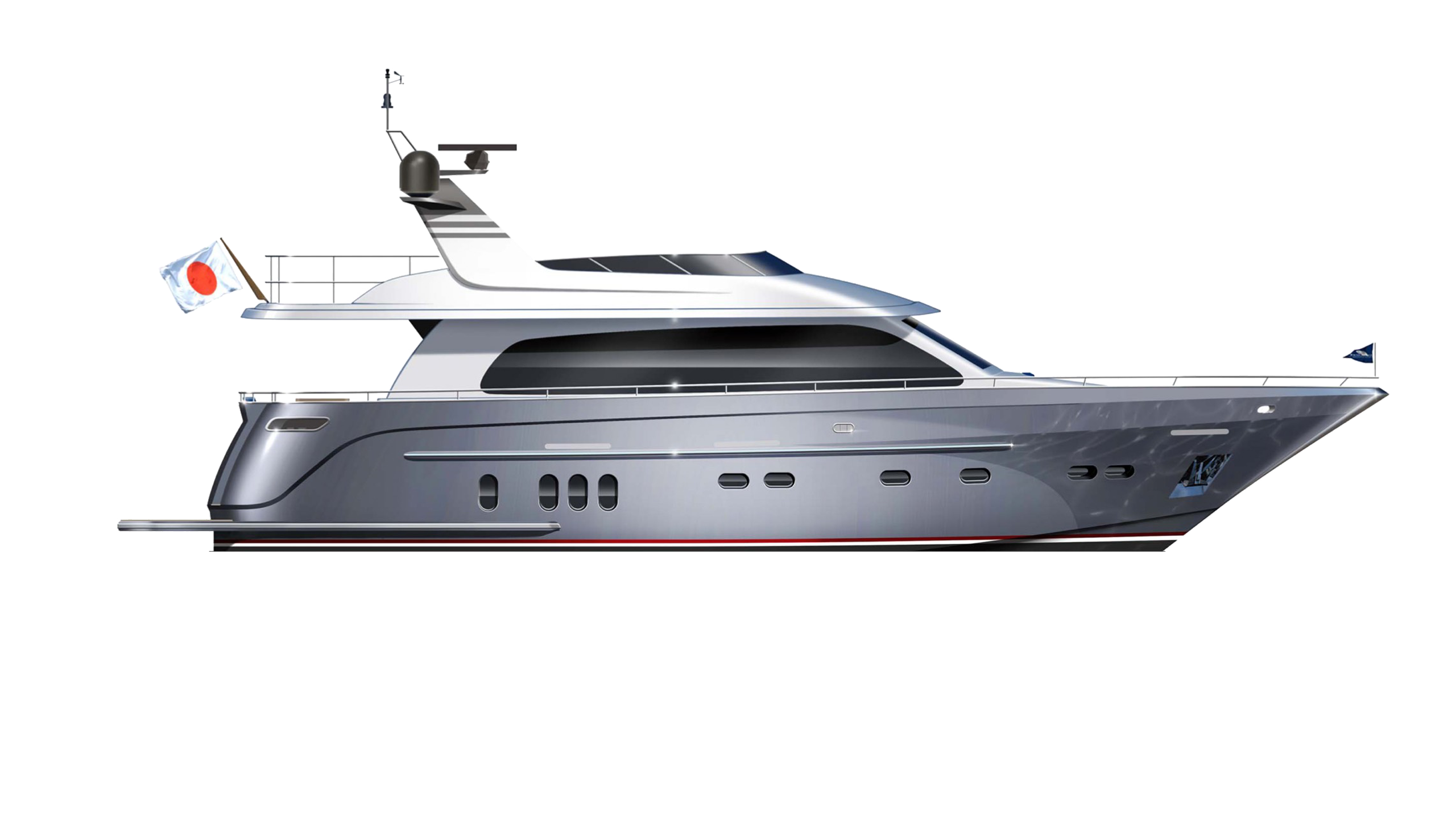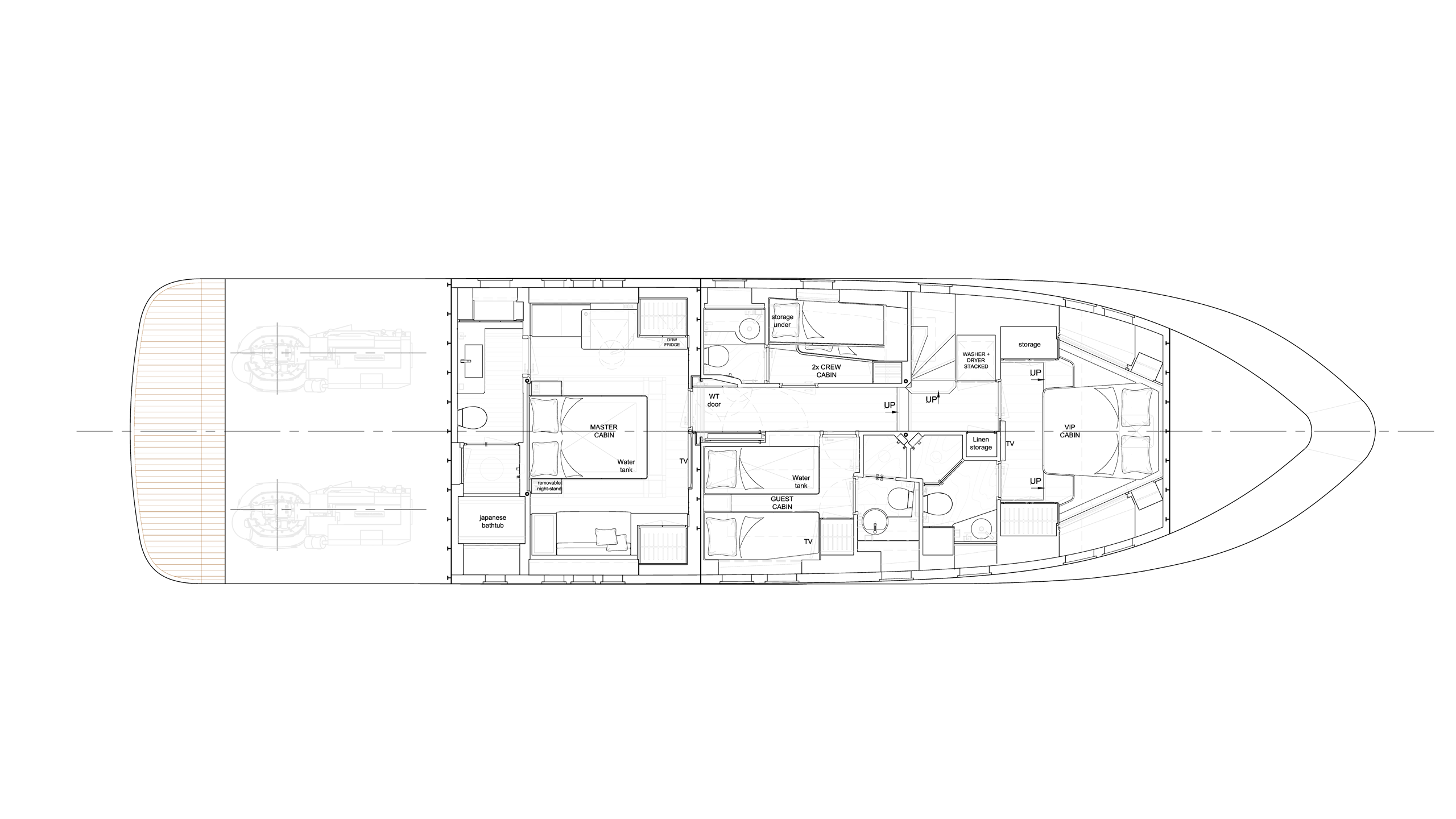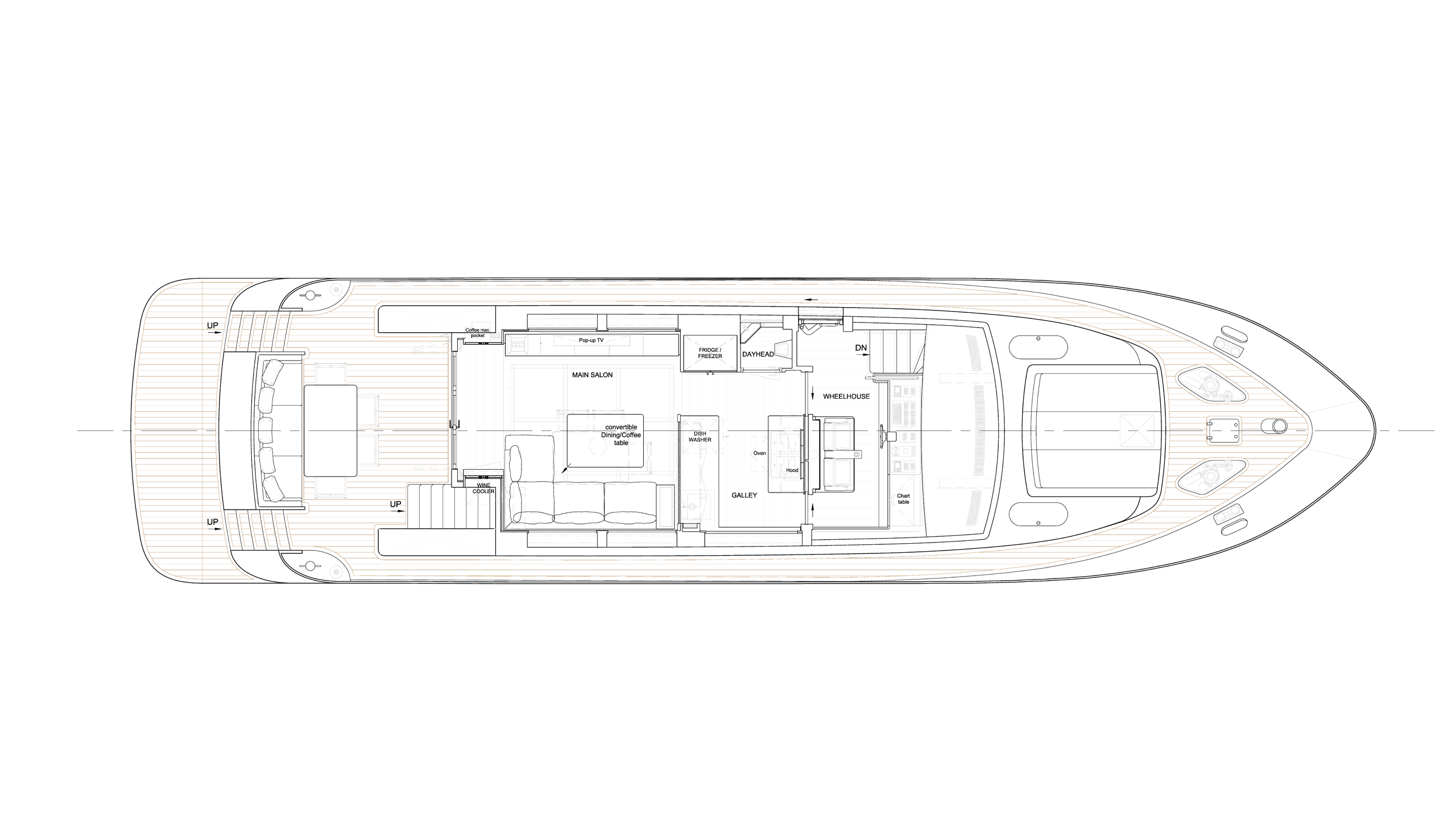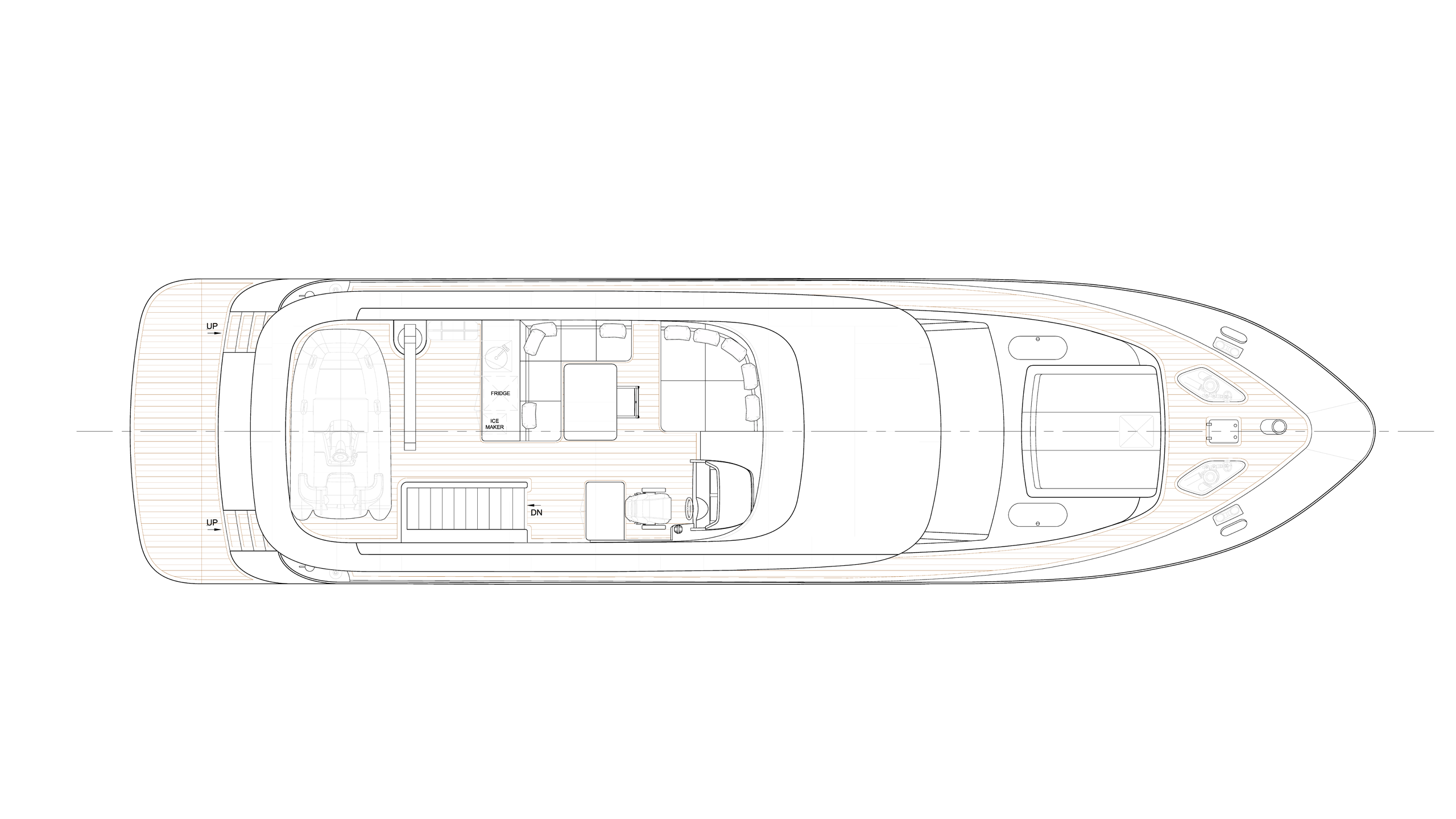Van der Valk building
first custom motoryacht for Japan
Van der Valk Shipyard in the Netherlands is taking its fully custom approach to the next level with the 21.27-metre Project Micamo. This bespoke flybridge motoryacht has been ordered by a client with precise requirements in terms of range and led to new rules being set by the Japanese flag state authorities. With a sophisticated exterior and interior by Guido de Groot Design, Project Micamo is set to showcase the finest Dutch craftsmanship to Japan in a unique way when delivered. It also confirms how far Van der Valk is prepared to go to meet custom demands.
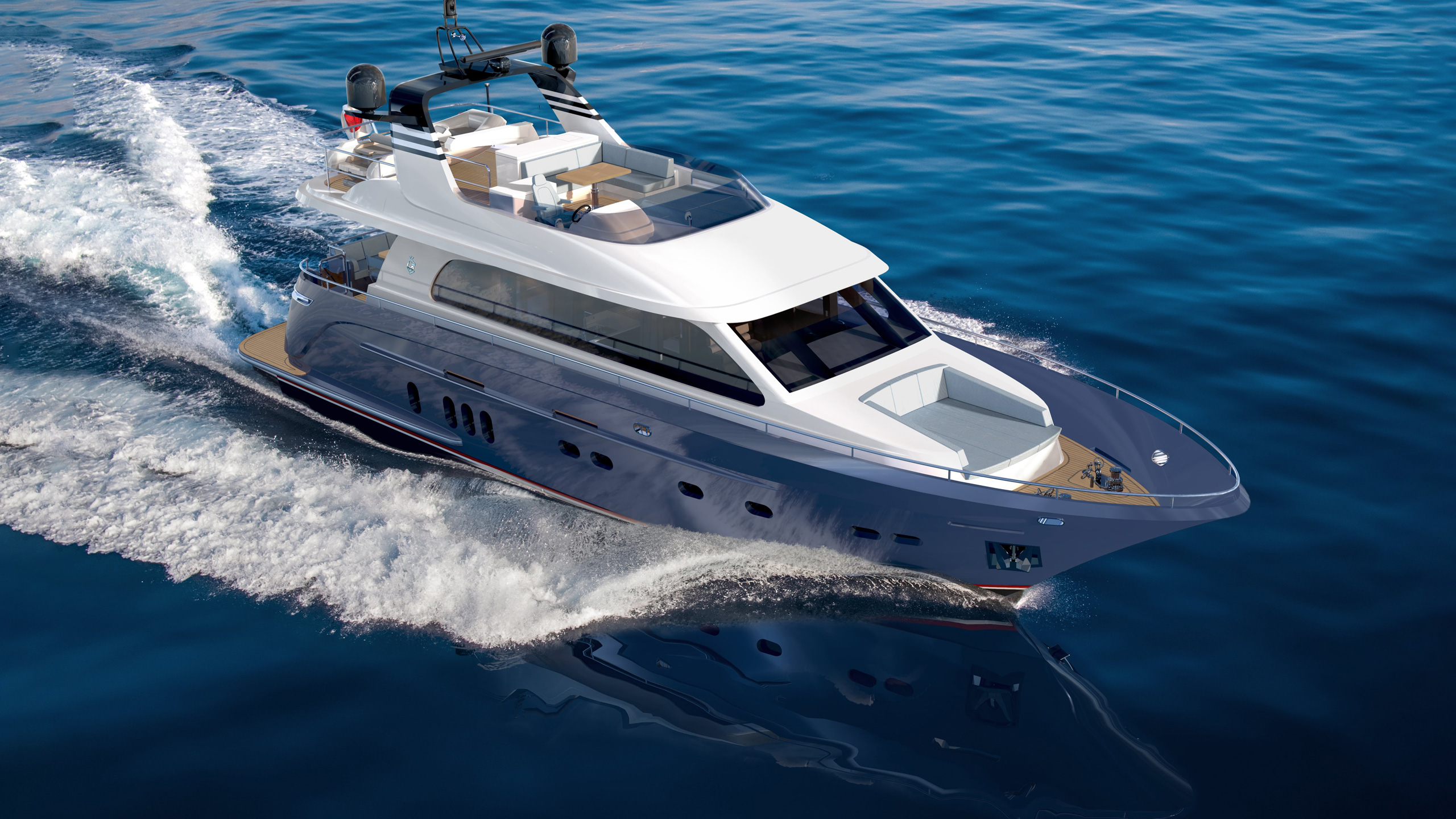
The owner of Project Micamo is keen to sail on his own keel to the Ogasawara Islands, a UNESCO World Heritage site located some 1,000 kilometres south of the main Japanese archipelago. A 24-hour ferry service runs to the archipelago from Tokyo and the maritime authorities have strict rules in place for commercial vessels that are equivalent to those applied to container ships. No regulations were in place, however, for a 20-metre pleasure craft making such lengthy passages so these had to be specifically adapted for Project Micamo.
“It has been a major undertaking for Van der Valk to fully comply with these rules in terms of construction, stability, buoyancy and safety,” explains general manager Bram Kooltjes. “Clear communication has been vital as we also have to meet all insurance requirements. The design and build of Project Micamo are following an extensive list of conditions that include a second watertight bulkhead in the accommodation and a watertight door in the corridor, items you’d normally only see on 300GT-plus superyachts.”
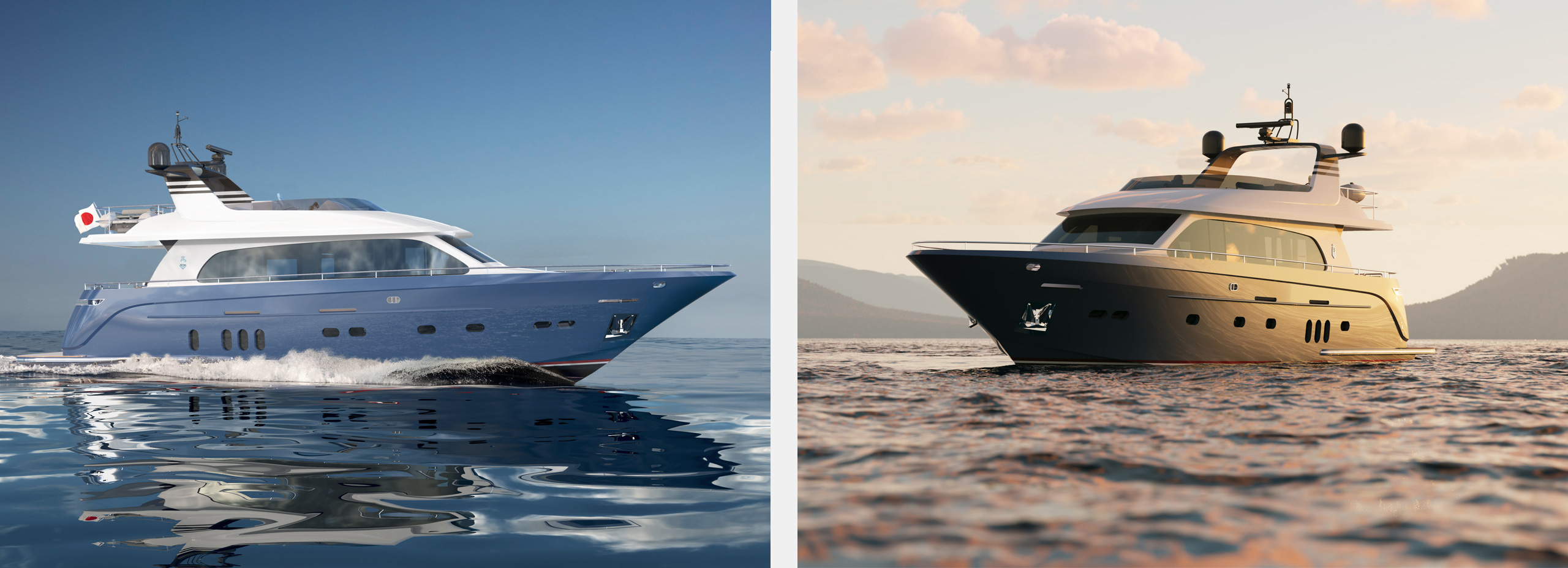
Meticulous preparations
Months of dedicated engineering, careful calculations, stability booklet updates and more have underpinned construction of the hull. “It may be an extraordinary degree of customisation for a 21-metre motoryacht but the owner could find no series/semi-custom boat on the market for his purposes that could sail such long distances in comfort,” adds Kooltjes. “Van der Valk’s expertise with bespoke builds and experience of the patience required for such projects has enabled our yard to carve out a niche market.”
The aluminium hull is currently close to completion and the Japanese authorities will then send a delegation to check the drawings and structure match.
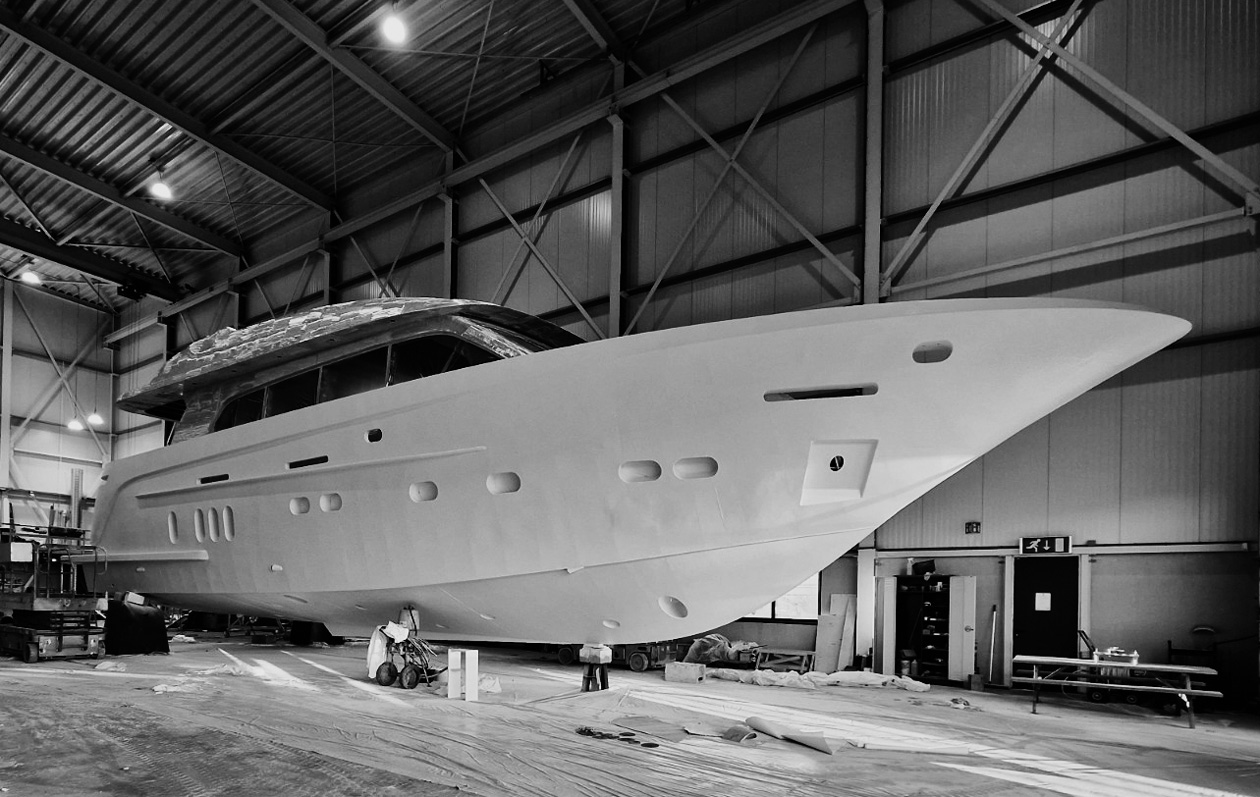
At the helm
Another key part of the brief for Project Micamo has been the owner’s desire to operate this complex yacht himself most of the time, along with the related consequences for the layout. The wheelhouse, for example, has to be kept free of intrusive reflections to facilitate long night-time passages. An electric blackout screen will be installed at the bottom of the stairwell adjacent to the bridge, ensuring no light emanates from the lower deck accommodations. The wheelhouse will have grey lacquer and leather on the walls and floor plus leather on the ceiling, with chic walnut edging around the helm seats offering a nice colour contrast.
Sliding doors will close off the rest of the main deck when required and a day head will be placed behind the bridge to avoid the owner having to go below when on watch. This is one of many examples of functional choices being translated into special designs with stylish aesthetics on Project Micamo.
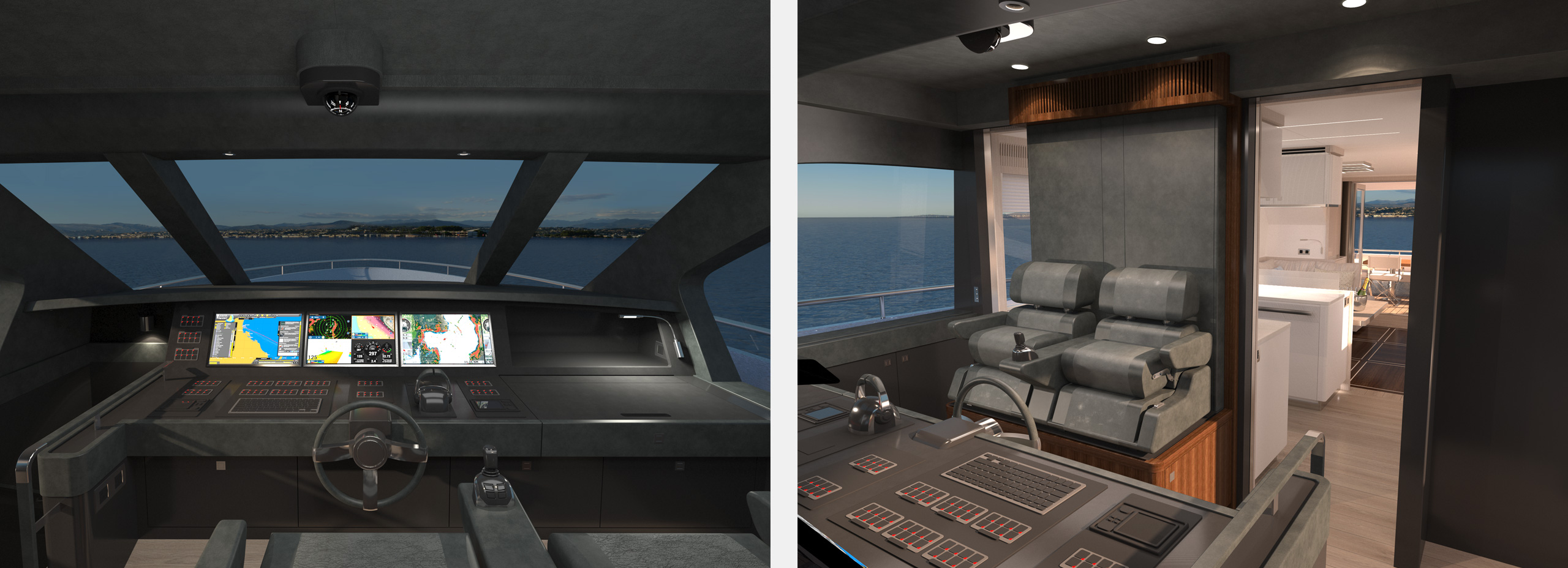
Sleek and timeless
The same applies to the yacht’s exterior profile. An admirer of previous Van der Valk designs, the owner chose for proven naval architecture based on earlier flybridge models, with aesthetics extensively modified to his wishes. The sleek hull and superstructure are totally remodelled, with traditional elements such as the portholes deliberately retained to enhance the timelessness. The yacht’s livery features bluish-grey hues and the Volvo Penta IPS-1350 propulsion setup will drive Project Micamo through the waves at a top speed of 29.5 knots.
A tender will be neatly stored aft on the flybridge, which also contains a helm station with adjacent seating to enable the onboard party to relax together while enroute. As in the lounge, the sofa dimensions have been completely tailored to offer owner and guests optimal comfort on long passages.
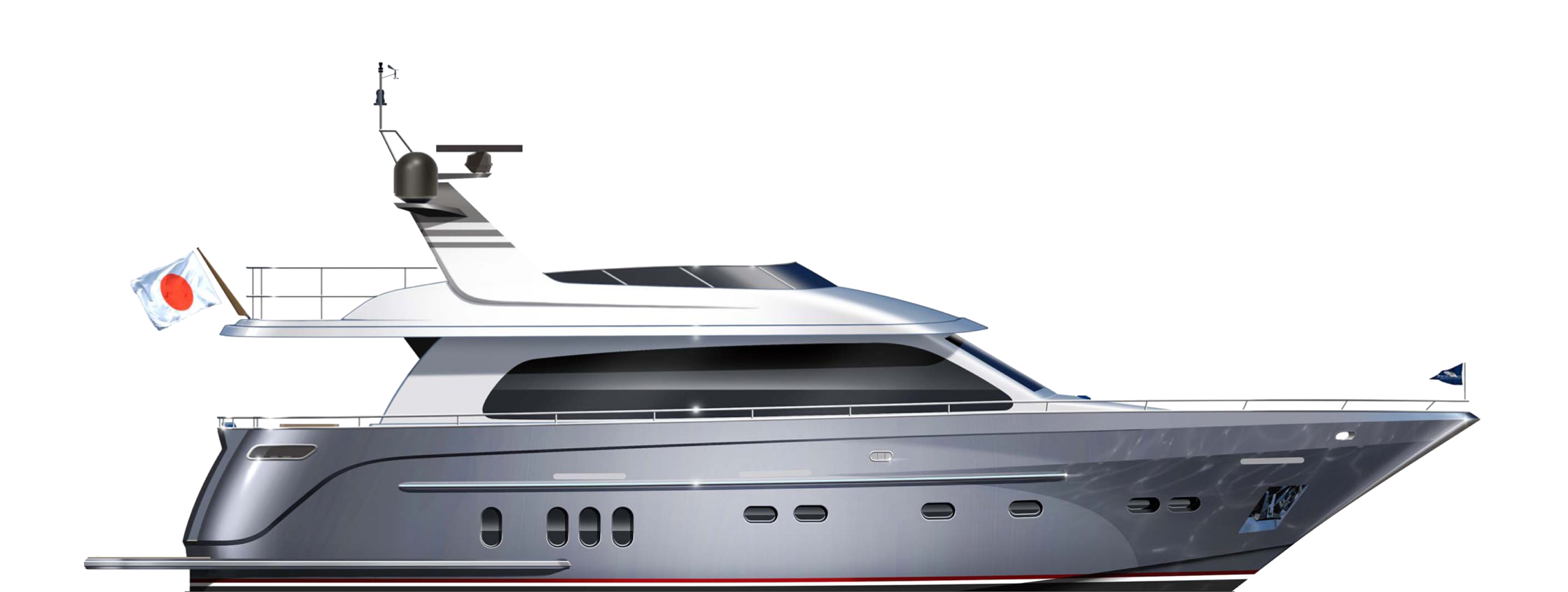
Fusion and power
This high level of personalisation continues in every aspect of the interior, developed by Guido de Groot and his team in Leiden, the Netherlands. “We were given considerable freedom to establish a minimalist Japanese style fused with various European influences,” explains De Groot. “The owner asked us to make the spaces look and feel as open as possible, which we’ve achieved with a consistent palette of colours that make the most of the natural light offered by the large windows. Various elements from nature in the form of stones and green plants enhance the soft tones while the white surfaces are offset by stainless steel elements.
“Vertical lines in items such as the air-conditioning outlets bring in a sense of power and a concept of balance to the overall interior. The owner wished for a carpeted look without actually have carpets fitted and the contrast of walnut planks and oak inlay floor strips with the rest of the décor meets this preference well. Strip lights are used for most ceilings with spotlights only installed in the wheelhouse and bathrooms. Project Micamo is going to be a wonderfully inviting environment for all who come aboard.”
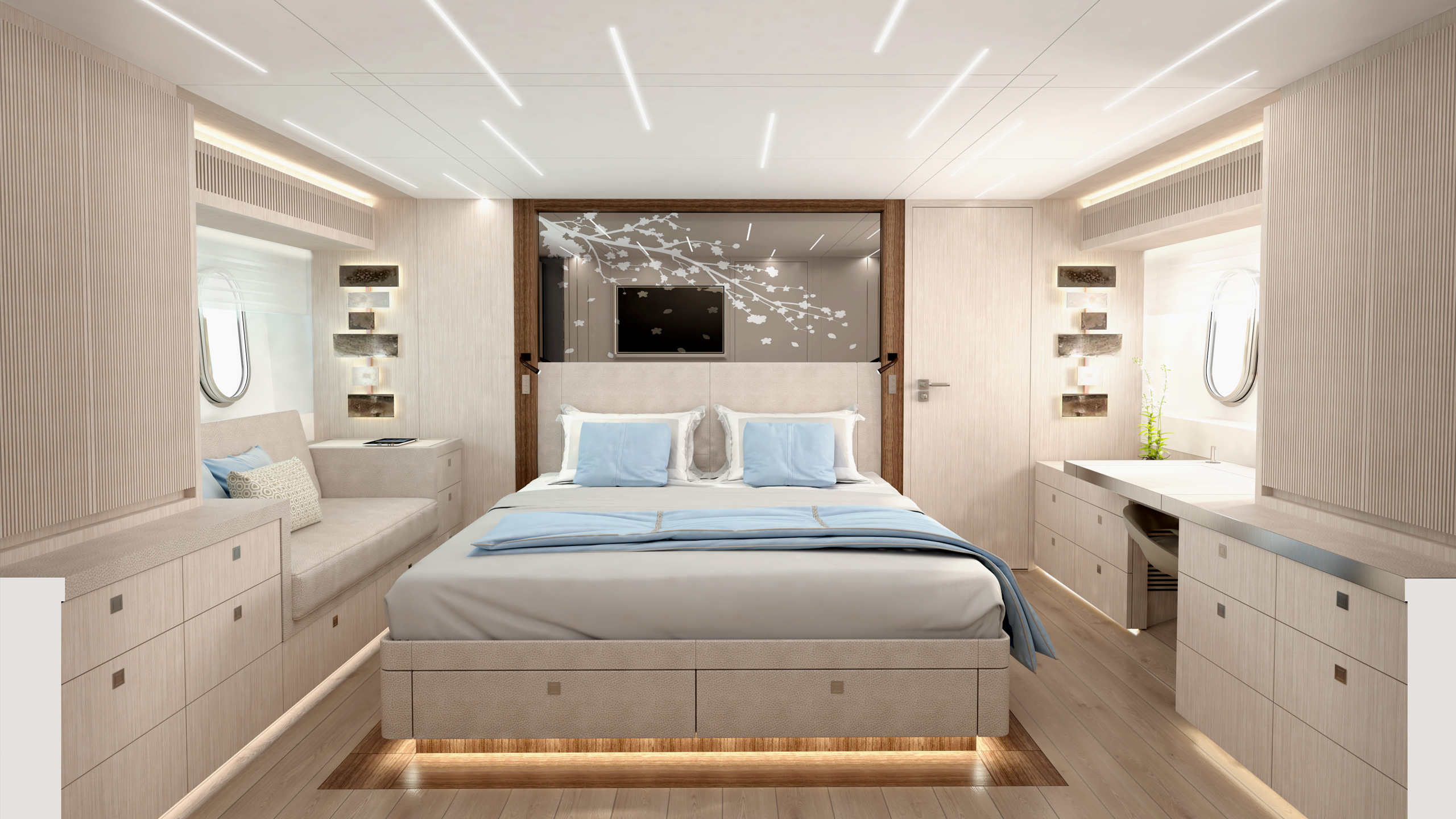
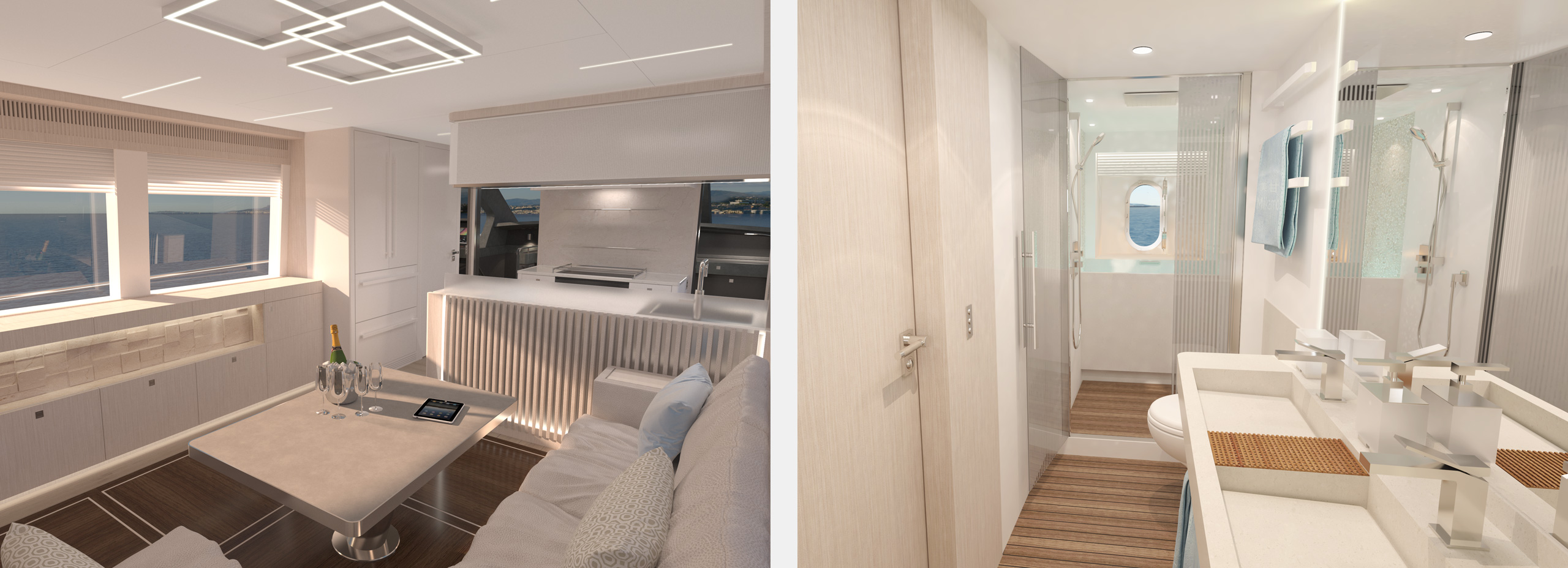
Optimising space
Every centimetre of the main deck has been meticulously planned out with the saloon having a dual function. The lounge seating can be converted into a dining place with the high-low table having an angled pedestal for moving closer to the sofa at mealtimes. The galley is also installed in this open-plan area and uses the available space very well, even finding room for a high fridge. A milk-glass petition on the working surface gives a sense of separation while avoiding spills over the vertical backlit soft leather strips on a panel which will make a fine transition with the saloon.
The owner was also keen to ensure that the lower deck layout makes life very comfortable for those who accompany him on his excursions. In addition to the master, there is a VIP suite in the bow, a guest cabin and a crew cabin that can also be used for guests.
The master suite encapsulates the quality of these accommodations as expansive windows flood the space with light. A large wood-framed mirror behind the bed will feature an etched blossom tree design while the under-bed lighting and walnut surround will make the room feel spacious. The gorgeous structure wall lamps on either side of the room are made of individual pieces of white crystal stone and metal modules with beams of LED light radiating from the intersections. Uniquely for a Dutch-built yacht, the master bathroom includes a Japanese bath tub in an 1144mm x 800mm format.

New horizons
Project Micamo is a yacht of premiers in a number of other ways, as Van der Valk sales manager Yoeri Bijker explains. “This is the first time that our yard and Guido de Groot Design have worked for a client from Japan, a country more known for its sailing yachts and wooden motorboats. Project Micamo will display an unprecedented degree of customisation for a 21-metre pleasure craft. And there is enormous potential for this yacht to become a flagship example of Dutch excellence, especially if she is presented at a major event like the Tokyo boat show.”
With its experience of working with Japanese flag state rules, Van der Valk is well positioned to meet the demands of a new community of owners who are looking for a premium superyacht created to their specific requirements.
